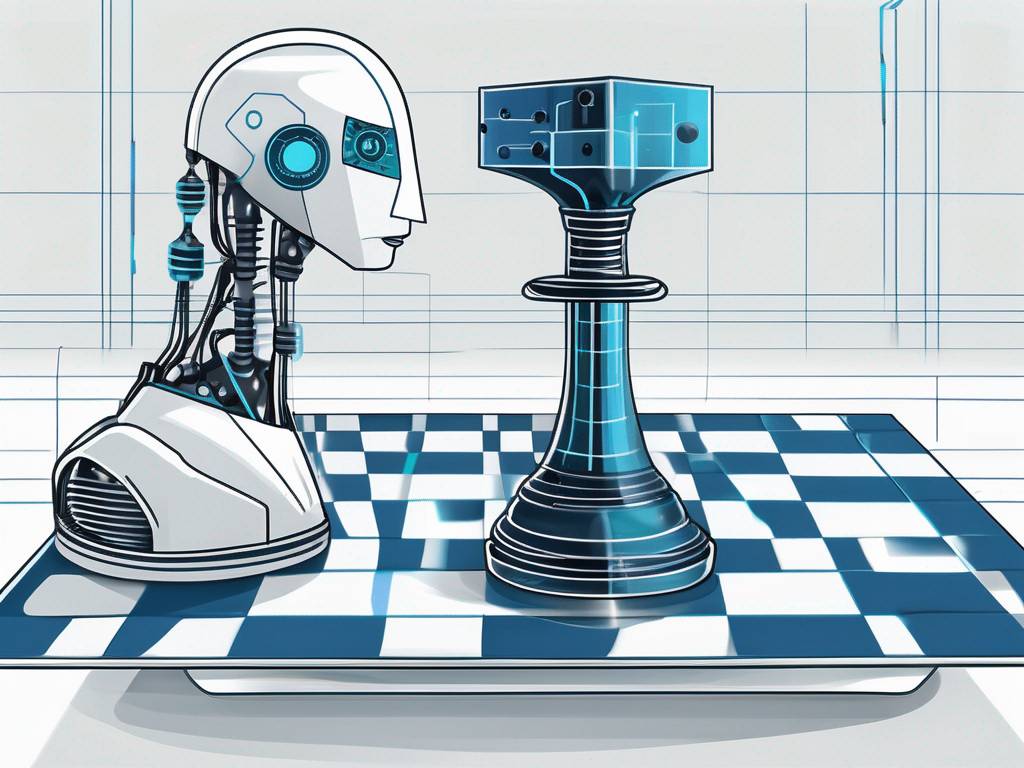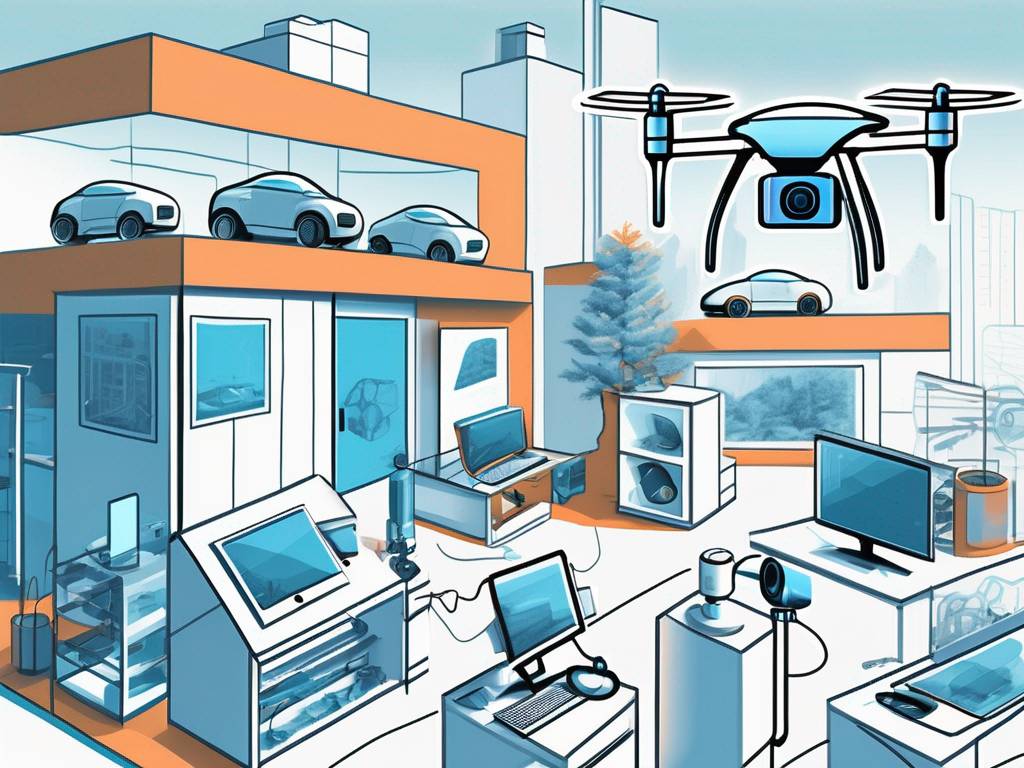Generative AI vs. Machine Learning: A Comprehensive Comparison
Key Insights
- Generative AI and machine learning are distinct technologies with different approaches to data analysis and learning techniques
- Generative AI focuses on creating new content, while machine learning emphasizes pattern recognition and predictions
- Both have strengths and weaknesses, with generative AI excelling in creativity and machine learning in accuracy and efficiency
- As future technologies evolve, generative AI is predicted to enable advancements in content creation, while machine learning will continue to drive innovations in various industries
Understanding the Basics: Generative AI & Machine Learning
Defining Generative AI
Generative AI refers to a branch of artificial intelligence that aims to generate new content, such as images, music, or text, based on existing data. Unlike other AI approaches that focus on recognizing patterns within data, generative AI seeks to create new content that is original and coherent.
One of the key techniques used in generative AI is Generative Adversarial Networks (GANs). GANs consist of two neural networks – a generator and a discriminator – that work in tandem to produce realistic outputs. The generator creates new data instances, while the discriminator evaluates whether the generated data is similar to the real data it was trained on. Through this adversarial process, GANs can generate high-quality, realistic content.
Defining Machine Learning
Machine learning, on the other hand, is a subset of AI that focuses on training algorithms to make predictions or take actions based on patterns and relationships found in data. It involves teaching computers to learn from data without being explicitly programmed, enabling them to improve their performance over time.
Within the realm of machine learning, there are different types of algorithms, including supervised learning, unsupervised learning, and reinforcement learning. Supervised learning involves training a model on labeled data, where the algorithm learns to map input data to the correct output. Unsupervised learning, on the other hand, deals with unlabeled data and focuses on finding hidden patterns or intrinsic structures within the data. Reinforcement learning is a type of machine learning where an agent learns to make decisions by interacting with an environment and receiving rewards or penalties based on its actions.
The Core Differences Between Generative AI & Machine Learning
Approach to Data Analysis
In terms of data analysis, generative AI has a more creative approach. It attempts to understand the underlying patterns and relationships within the data to generate new content that is coherent and meaningful. This creative approach allows generative AI to push the boundaries of what is possible in terms of content creation, enabling it to come up with innovative and unique outputs that can inspire and engage users in various ways. By delving deep into the data to uncover hidden connections, generative AI opens up a world of possibilities for generating content that goes beyond simple recognition and replication.
Generative AI’s focus on understanding the nuances of data relationships enables it to create content that is not only accurate but also emotionally resonant. This ability to evoke feelings and provoke thought through generated content sets generative AI apart in the realm of data analysis and content creation.
Learning Techniques
Generative AI uses techniques such as variational autoencoders and generative adversarial networks (GANs) to generate new content. These techniques involve training the AI model to understand the latent variables and generate realistic outputs. By leveraging these advanced techniques, generative AI can produce content that is not only realistic but also novel and imaginative, pushing the boundaries of what AI can achieve in terms of creativity and innovation.
On the other hand, machine learning relies on various algorithms like decision trees, neural networks, or support vector machines (SVM) to analyze and predict based on learned patterns and relationships. While machine learning excels at recognizing and understanding existing patterns within data, its focus on prediction and classification limits its ability to generate truly original and creative content like generative AI.
Application Areas
Generative AI finds applications in various creative fields, including art, music, and writing. It can be used to generate realistic images, compose music, or even write stories. The versatility of generative AI in creative endeavors opens up new possibilities for artists, musicians, and writers to explore and experiment with AI-generated content, blurring the lines between human creativity and artificial intelligence.
Machine learning, on the other hand, has a wider range of applications, including image recognition, speech recognition, fraud detection, and predictive analytics. Its ability to analyze vast amounts of data and make accurate predictions based on learned patterns makes machine learning indispensable in industries such as finance, healthcare, and marketing, where data-driven insights are crucial for decision-making and strategy development.
The Strengths & Weaknesses of Generative AI
Advantages of Generative AI
Generative AI excels in creativity and content generation. It can create new and meaningful content that appears realistic and coherent, enabling artists and creators to explore new possibilities. Additionally, generative AI has limitless potential for creating original and engaging content, consistently pushing the boundaries of creativity.
Limitations of Generative AI
One of the limitations of generative AI is the difficulty in controlling the output. While generative AI can produce impressive results, it can also generate content that lacks coherence or falls into uncanny valley territory. Additionally, generative AI requires substantial computational resources and large amounts of training data to achieve optimal results.
The Strengths & Weaknesses of Machine Learning
Advantages of Machine Learning
Machine learning is highly efficient in recognizing patterns and making accurate predictions. It has revolutionized industries such as healthcare, finance, and customer service by enabling accurate diagnosis, predicting market trends, and personalizing user experiences. Machine learning algorithms can process vast amounts of data quickly and provide insights that drive informed decision-making.
Limitations of Machine Learning
One limitation of machine learning is its heavy dependence on training data. The accuracy and efficiency of machine learning models heavily rely on the quality and quantity of data used for training. Additionally, machine learning models can be complex, making it challenging to interpret the reasoning behind their predictions, which can raise ethical and trust concerns.
The Role of Generative AI & Machine Learning in Future Technologies
Predictions for Generative AI
In the future, generative AI is expected to play a significant role in content creation, enabling even more realistic and immersive experiences in various domains. From generating life-like virtual environments to designing highly personalized products, generative AI will continue to push the boundaries of creativity and enhance human interactions with technology.
Predictions for Machine Learning
Machine learning is expected to continue its rapid growth and influence across industries. It will power advancements in data analysis, automation, and predictive modeling, enabling better decision-making processes and driving innovation further. Machine learning will be instrumental in solving complex problems, optimizing processes, and creating intelligent systems that revolutionize how we live and work.
As generative AI and machine learning progress, their unique characteristics will complement each other, leading to more sophisticated and advanced applications. Understanding the differences and strengths of generative AI and machine learning is crucial for harnessing their full potential and leveraging them in the ever-evolving landscape of artificial intelligence.
Unlock the Potential of Generative AI & Machine Learning With WestLink
As we stand on the brink of a new era in artificial intelligence, the possibilities with generative AI and machine learning are truly limitless. Whether you’re looking to innovate in big data, bioinformatics, IoT, or any other cutting-edge field, WestLink is your partner in navigating the complexities of these technologies. Ready to explore how WestLink can elevate your company’s capabilities with AI and machine learning? Learn more about our services and let’s create the future together!

 hello@westlink.com
hello@westlink.com  (866) 954-6533
(866) 954-6533  700 N Colorado Blvd,
700 N Colorado Blvd,







Comments